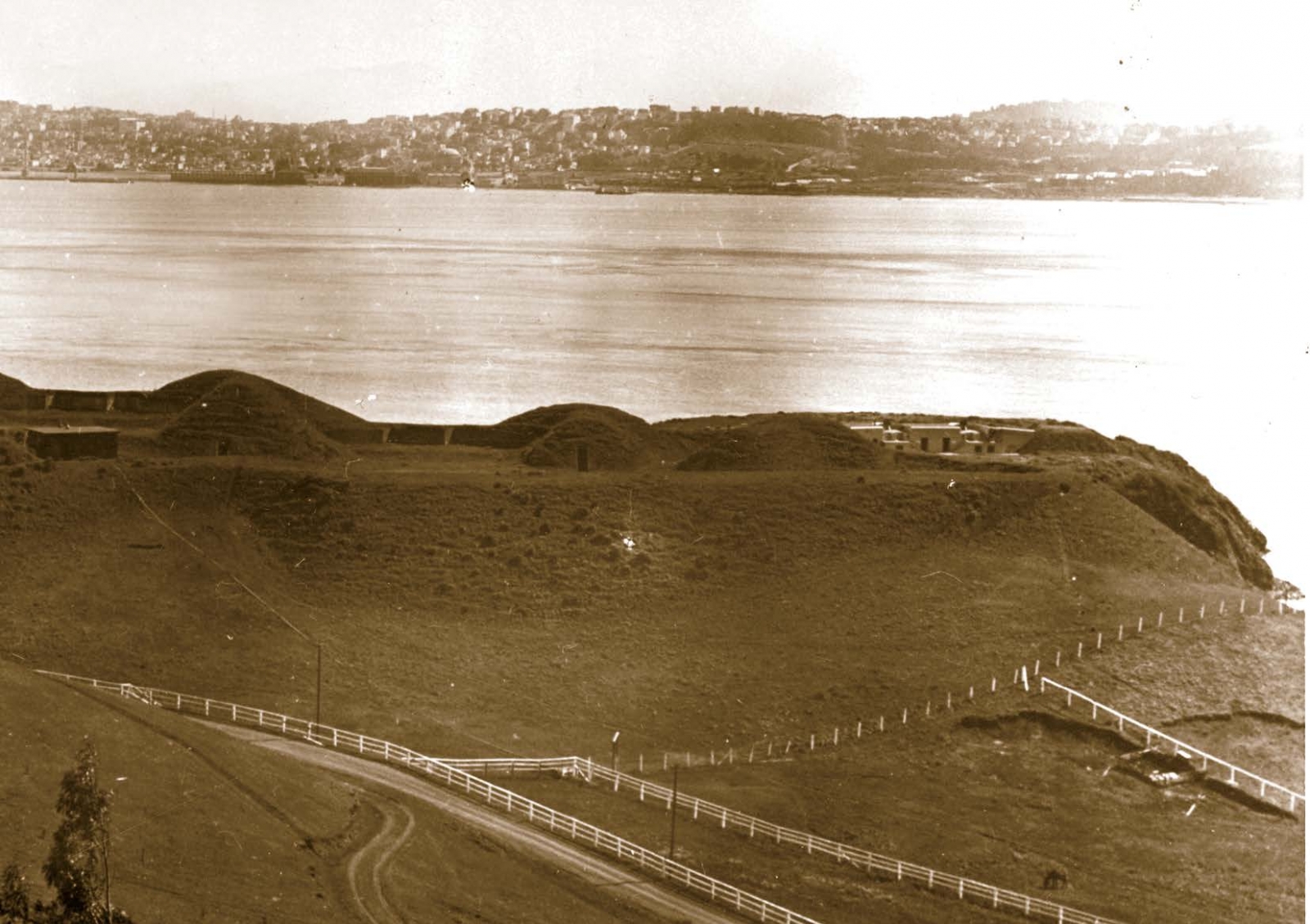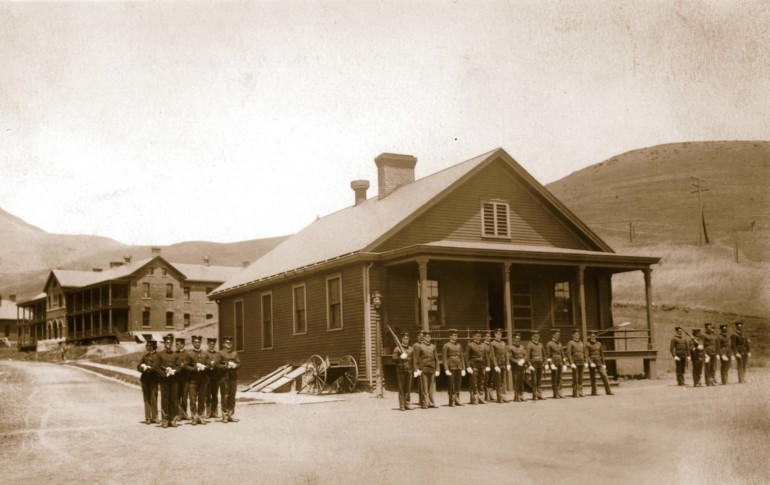THANKS TO AN eerily comprehensive collective consciousness — or an overzealous push by San Francisco tourism bureaus — the summer of 2017 has served as an unmistakable reminder of another, far more colorful summer, the Summer of Love. At exhibits and fairs, vestiges of the peace-touting hippies who turned on, tuned in and dropped out half a century ago are omnipresent, making it easy to forget that contrary to the images seen in vibrant print posters, the Bay Area has historically been a heavily armed military stronghold.
Forever a desirable location, San Francisco was considered among the most important military ports in the United States for more than 100 years, second only to New York Harbor. And since the city had the most strategically important port on the West Coast, it should come as no surprise that a well-preserved historical record was left behind. The area surrounding the Golden Gate strait contains remnants of seven distinct war eras, from the Spanish-Mexican period in 1776 up until the Cold War. These forts and other coastal defenses are still visible and include some of the best and most extensive military architecture in North America.
The largest remaining collection of batteries are from the Endicott Period, which began around 1885 and continued through the World War I and World War II periods. Named for Secretary of War William C. Endicott, the Endicott Period reflects an era when the War Department placed a big emphasis on seacoast fortifications around the country. As a response, the army made a concerted effort in the 1890s to modernize and rearm all these forts. Artifacts of these batteries and forts can be seen throughout the county, with a few standouts. Built in the Marin Headlands in 1908, Fort Barry is one of the Golden Gate National Recreation Area (GGNRA)’s best examples of an Endicott Period army post. Fort Cronkhite, in the Marin Headlands north of Rodeo Lagoon, is one of the few examples of a World War II mobilization post remaining in the country. But it’s Fort Baker that still provides public safety protections today, alongside such diverse features as a LEED-certified resort, yacht club, children’s museum and water access for recreation.
 The last “post-to-park” conversion in the GGNRA system, Fort Baker is a 335-acre former 1905 U.S. Army post located north of the Golden Gate Bridge in Sausalito, along Horseshoe Cove. In the fort’s heyday the cove was home to the Harbor Defense Command’s local mine depot, where Coast Artillery soldiers loaded 800 pounds of TNT into metal mines and planted them underwater with a complex series of electronic cables. If an enemy vessel or submarine was spotted entering San Francisco Bay, the mines could be electronically triggered by a shore-based detonating station. The army also built a marine repair shop that provided maintenance for the small civilian boats used in the mine operation in the cove.
The last “post-to-park” conversion in the GGNRA system, Fort Baker is a 335-acre former 1905 U.S. Army post located north of the Golden Gate Bridge in Sausalito, along Horseshoe Cove. In the fort’s heyday the cove was home to the Harbor Defense Command’s local mine depot, where Coast Artillery soldiers loaded 800 pounds of TNT into metal mines and planted them underwater with a complex series of electronic cables. If an enemy vessel or submarine was spotted entering San Francisco Bay, the mines could be electronically triggered by a shore-based detonating station. The army also built a marine repair shop that provided maintenance for the small civilian boats used in the mine operation in the cove.
In the wake of the World War II bombings of Pearl Harbor and Hiroshima, the threat of foreign attack on U.S. soil shifted from naval assault to air attack, particularly involving nuclear weapons, and during the Cold War Fort Baker became home to the headquarters of the Sixth Army Air Defense Command Region (ARADCOM). The Sixth ARADCOM Region was responsible for staffing 12 permanent Nike antiaircraft missile launch sites around the Bay Area, including in the East Bay, south of the Golden Gate, and at Fort Cronkhite, Fort Barry, Angel Island and San Rafael. These missile sites would receive initial targeting information from an early-warning radar station at the Mill Valley Air Force Station on Mount Tamalpais, now visually memorialized in the large “golf ball” resting on the ridge.
After the Cold War the 91st Division, which had provided training support, was stationed at Fort Baker under the command of the Travis Air Force Base, but times were changing. In 1995, the military transferred its land to the GGNRA and in 2000, the last soldiers left Fort Baker. Today, the U.S. Coast Guard Station Golden Gate is at Horseshoe Cove, where it is responsible for search-and-rescue missions, homeland security, maritime law enforcement, maritime environmental protection and boating safety, while the Travis Air Force Base continues to operate the Sailing Marina Center at the Presidio Yacht Club. More than 25 historic army buildings can still be found at Fort Baker, including structures at Cavallo Point and Battery Yates, along with trails and remarkable bay views.
Photos courtesy of Anne T. Kent California Room, Marin County Free Library (top);
GGNRA, Park Archives, Pam Print Collection (bottom)
This article originally appeared in Marin Magazine’s print edition under the headline “Bastions, Batteries, and Beyond”

Kasia Pawlowska loves words. A native of Poland, Kasia moved to the States when she was seven. The San Francisco State University creative writing graduate went on to write for publications like the San Francisco Bay Guardian and KQED Arts among others prior to joining the Marin Magazine staff. Topics Kasia has covered include travel, trends, mushroom hunting, an award-winning series on social media addiction and loads of other random things. When she’s not busy blogging or researching and writing articles, she’s either at home writing postcards and reading or going to shows. Recently, Kasia has been trying to branch out and diversify, ie: use different emojis. Her quest for the perfect chip is never-ending.


